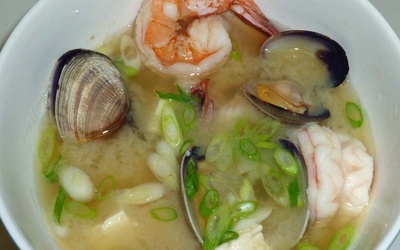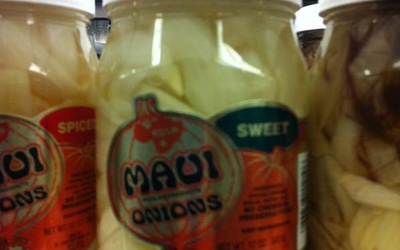Nikkei Chronicles #1—ITADAKIMASU! A Taste of Nikkei Culture

For many Nikkei around the world, food is often the strongest and most lasting connection they have with their culture. Across generations, language and traditions are often lost, but their connections to food remain.
Discover Nikkei collected stories from around the world related to the topic of Nikkei food culture and its impact on Nikkei identity and communities. This series introduces these stories.
Our Editorial Committee selected their favorite stories in each language. Here are their favorites:
- ENGLISH:
Authentic
By Barbara Nishimoto - JAPANESE:
Grandma’s Pickles Story: Sharing Grandma’s Rakkyo with the World
By Asami Goto - SPANISH:
Japanese Stoicism By Ariel Takeda - PORTUGUESE:
Ofukuro no aji: Mrs. Shizuka’s cassava misoshiru
By Rosa Tomeno Takada
Stories from this series

Gohan o Kudasai – Immersed in Japanese Food
Oct. 24, 2012 • Yukari Sakamoto
In the Northern woods of Minnesota the call of a loon echoes on the lake. The wind rustles through a forest of birch trees. And at a summer camp in the dining hall, an enthusiastic group of kids call out “itadakimasu,” before digging into dinner. The sign on the building says shokudo in English, hiragana, and kanji. Mori no Ike is the Japanese language and culture immersion summer program of the Concordia Language Villages. From the moment that the campers …

Homemade Miso Soup
Oct. 23, 2012 • Ben Arikawa
If you have been to a Japanese restaurant in the United States, you probably have been served a warm, salty, light brown miso soup. Sometimes it will have thinly sliced scallions floating in the broth. Sometimes there will be miniature cubes of tofu hidden in the depths below the particles of miso suspended in the broth. It is offered more as an afterthought, usually before a meal of overly large portions of protein or sushi. My daughter, Elizabeth, came back …

Grandma’s Pickles Story: Sharing Grandma’s Rakkyo with the World
Oct. 19, 2012 • Asami Goto
1) The Homemade flavor of grandma’s tsukemono Currently, a wide variety of Japanese food items can be found at Japanese super markets in America. Amongst them are tsukemono (Japanese pickled vegetables) which can be found in multiple styles, from asazuke (lightly pickled vegetables) to nukazuke (vegetables pickled in brine and fermented rice bran), using various vegetables such as ginger, cucumber, Chinese cabbage, and Japanese leeks. In addition to the goods exported from Japan, nowadays we are starting to see local …

Terroir…
Oct. 18, 2012 • Bill Tierney
… in French, literally means “soil”. Today it is nuanced to refer to products of a soil and more specifically those that are unique to a particular regional terroir. This essay began simply enough but nearly spiraled out of control the more I learned about the person you are about to meet. As a writer sometimes the story finds you. So, in August of 2012 I visited the annual Paso Robles Olive Festival. If you can get past the craft …

Japanese Stoicism
Oct. 17, 2012 • Ariel Takeda
In order to give you a better idea of who I am, we can start by saying that I am a product of southern Chile where I was born and raised and where I got my first teaching experience. Within those parameters—even today—Japanese culture was hard to come by, and, very little of it was practiced inside our home. My childhood was defined both by a domineering Chilean mother who ran the same tight ship that she had experienced growing …

My Log Cabin Sukiyaki Song*
Oct. 16, 2012 • Tamiko Nimura
1.The comment on my blog begins, “I have found you and your sister at last.” The commenter describes herself as a childhood/young-adulthood friend of my dad’s. As far as I know, we’ve never met. But she knows my sister’s and my name, two fairly unusual names even in Japanese America. She knows that I grew up in Roseville, California. She says that she has memories of my father that she wants to share with me. I’m slightly creeped out at …










































